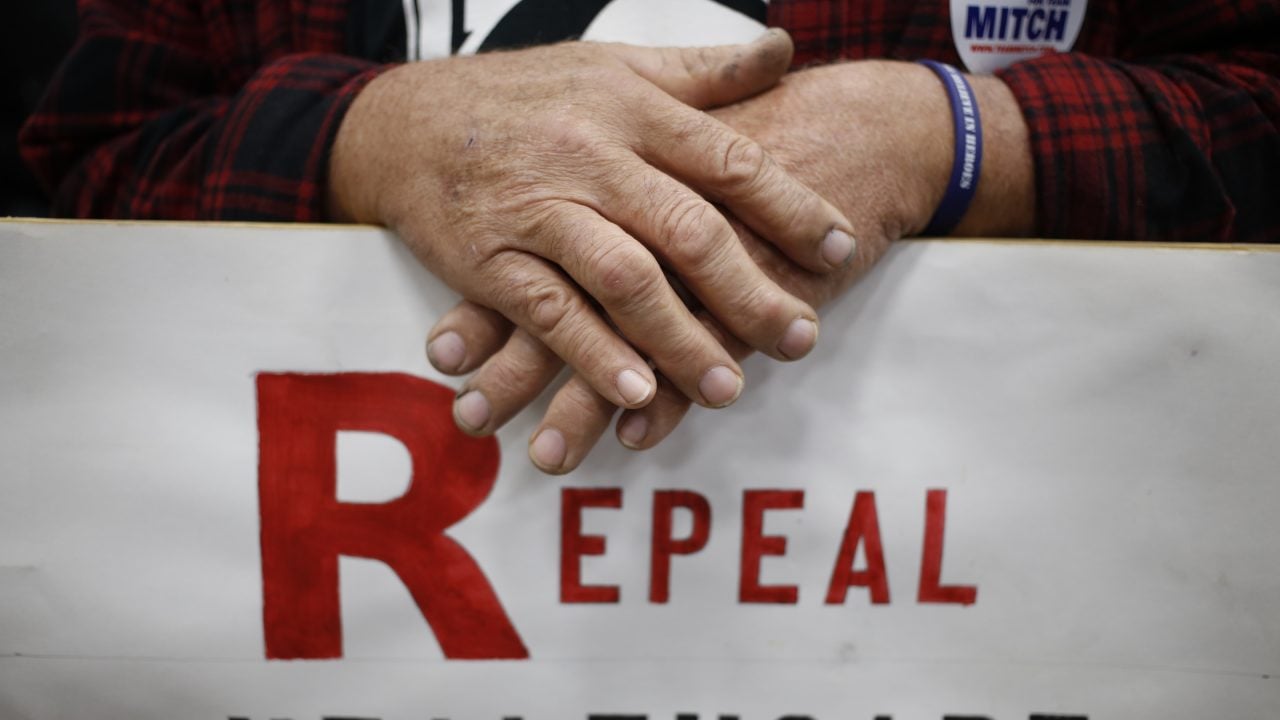We Have To Earn $42,000 Every Year Just To Cover Our Obamacare, And Trump Wants to Keep It
 My wife and I are both older than 60. We are in excellent health, not under any prescription drug regimen, and physically active. We live in New Hampshire, which enjoys not only a variety of weather patterns, but a plurality of Obamacare insurance providers.
My wife and I are both older than 60. We are in excellent health, not under any prescription drug regimen, and physically active. We live in New Hampshire, which enjoys not only a variety of weather patterns, but a plurality of Obamacare insurance providers.
My wife and I have not benefitted from an employer-provided health insurance plan for more than three years. We have instead obtained our health insurance through Obamacare. To keep the insurance plan, doctors, and hospitals we liked for more than 14 years, our premiums under Obamacare increased 225 percent with deductibles increasing 325 percent.
We couldn’t afford the annual premiums of $22,000, so we were forced to change our doctors and insurance plan. While we managed to reduce our premiums, we lost significant choice in hospitals and were subjected to ever-increasing deductibles.
We Have to Pay $15,000 for Our Insurance to Kick In
We purchased our Obamacare through a broker because doctors convenient to our location who were accepting new patients only accepted broker-sourced insurance plans. Had we purchased our Obamacare via the “exchange,” our nearest doctor would have been more than 45 miles away, more than an hour’s drive. The exchange-sourced policies also featured extremely limited hospital availability.
While relatively healthy, we recently needed treatment from our physician. The treatment was minor, but it laid bare the realities of what is covered by one’s plan and out of one’s deductible. Thankfully, a helpful customer service person from our insurance company explained how Obamacare coverage really works relative to essential health benefits.
The key distinction is the difference between preventative and diagnostic procedures. Preventative procedures are covered directly by one’s Obamacare policy, and not subject to deductibles. Under our policy these are limited to mammograms, colonoscopies, appointments for gynecological exams and physicals, and cholesterol screening. Diagnostic procedures include all other procedures and tests and must be paid for by the patient until his deductible limit has been satisfied.
Given the focus on prevention to head off serious medical issues, including these procedures and tests is appropriate. However, if we were to avail ourselves of all these tests during a normal year, the imputed cost would be less than $2,000 for both of us. This includes the prorated cost of a colonoscopy, since we, thankfully, don’t need to experience that procedure every year.
After accounting for these annual preventative treatment costs, there is more than $13,000 remaining of our more than $15,000 annual premiums to cover a serious or catastrophic situation. However, the coverage associated with that remaining $13,000 is not available until we have paid approximately $15,000 in deductibles (i.e., roughly $7,500 per person). The impact of deductibles is particularly vexing if one becomes sick at the end of a given policy year, as the deductible balance resets to zero on January 1.
We Need to Make $42,000 Just to Afford a Catastrophe
We are thankful that we are healthy and take deliberate steps to remain so. However, with the only thing guaranteed in life being yesterday, we have to set aside financial resources in case of a worst-case scenario. For us that means setting aside more than $30,000 in after-tax dollars to cover our premiums and deductibles.
In real terms, we need to earn at least $42,000 annually to cover just our potential medical cost exposure. Over the past three years, the nearly $50,000 we have paid in premiums alone represents over six months of living expenses after the effective costs of covered preventative procedures are netted out. Our efforts to live a healthy lifestyle have allowed us to spend nearly $50,000 for risk coverage we have, thankfully, not needed.
How much did the Obamacare mandates for pediatric dental, prenatal care, and other issues that a married couple over 60 has little or no use for exacerbate our significant financial burden for premiums and deductibles? It is hard to really know. What we do know is that our total annual exposure for medical insurance is more than our mortgage payments.
How RINO TrumpCare Plans Might Affect Us
So, how are we impacted by Republicans’ alternative to Obamacare, the American Healthcare Act (AHCA)? It is difficult to quantify because all that has been loosely shared may only be act one of a three-act drama. However, if what we have glimpsed of the Republicans’ dress rehearsal goes into production, we can extrapolate some repercussions.
The AHCA provision to allow insurers the latitude to charge older people five times more than younger people is worse than Obamacare’s factor of three. While the AHCA eliminates the Obamacare individual mandate and IRS penalty, it imposes a penalty of up to 30 percent of one’s premium for 12 months for not maintaining continuous coverage. Obamacare’s income-based subsidies are replaced by the ACHA’s age-based tax credits, which further penalize older individuals. Please note that the Obamacare subsidies are only available for those who purchase their policy via an “exchange”: broker-sourced coverage is not eligible for any subsidy.
For this healthy couple over 60 years old, there is no substantive difference between Obamacare and the AHCA. In many respects, we may be worse off financially. Until we can purchase medical insurance more tailored to our specific needs and considerations, we are up a proverbial creek without a paddle or even a canoe. Moreover, we are extremely concerned that the extreme dysfunction over insurance will only accelerate the disturbing erosion in the quality of our health-care system.
